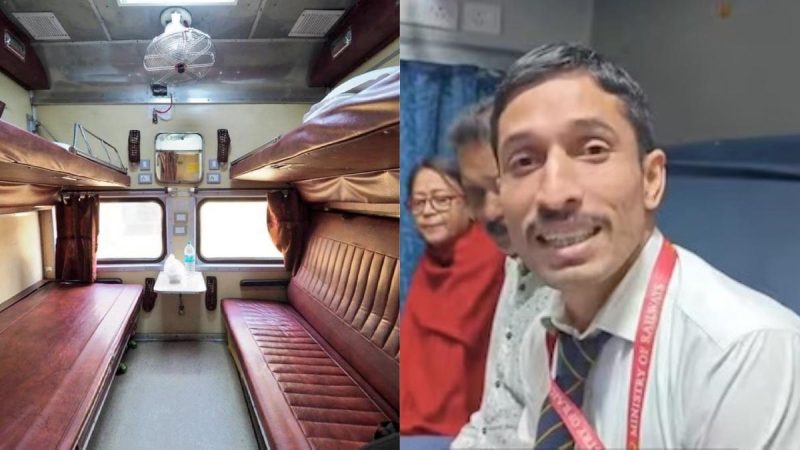On the Dibrugarh Rajdhani Express, somewhere between Assam’s lush greens and Delhi’s crowded platforms, a railway TTE decided to clear up a mystery that’s long puzzled India’s elderly travellers: why do senior citizens often end up climbing to upper berths, despite being entitled to the lower ones?
Viral Dibrugarh Rajdhani Video: TTE Explains Senior Citizens Train Tickets Hack
The video, now viral, shows him surrounded by curious passengers, explaining something most of us overlook, a small technicality buried deep in the railway booking system. “If more than two senior citizens are booked on the same ticket,” he says, gesturing toward the reservation chart, “the system treats it as a general quota. That’s why even 70-year-olds end up on the middle or upper berth.”
That 20-second clip has now become a masterclass in how one small booking choice can change your entire travel experience.
How The Senior Citizen Quota Works: Booking Train Tickets
When a senior citizen, defined as a man above 60 or a woman above 45, books under the Lower Berth/Senior Citizen quota, the Passenger Reservation System automatically prioritises a lower berth.
But there’s a catch: the quota only functions properly if the booking includes no more than two eligible passengers on a single PNR. Add a third person, or include someone below the age limit, and the entire group quietly slides back into the general quota pool.
Each train coach has a limited number of seats earmarked for this quota, roughly 6-7 lower berths in Sleeper Class, 4-5 in AC 3-Tier, and 3-4 in AC 2-Tier, shared among senior citizens, women over 45, and pregnant women. Once those are gone, even eligible travellers are at the mercy of availability.
Also Read: Redditor Questions Ticketless Travellers On Indian Trains; Netizens Call It A Daily Struggle
Railways Responds To Clear Dilemma
The viral clip struck such a chord that IRCTC itself jumped in to clarify on X (formerly Twitter):
“Lower berth/Sr. Citizen quota berths are earmarked only for male passengers aged 60 years and above and female passengers aged 45 years and above, when travelling alone or with up to two passengers under the same criteria. If a senior citizen travels with non-seniors, the quota will not apply.”
In simpler terms, the system cannot read your intentions, only your PNR.
Precautions To Take: Booking Train Tickets For Senior Citizens
If you’re booking for parents or grandparents, keep it simple: two names per ticket, both eligible by age. Book early, those few lower berths per coach vanish faster than Diwali tatkal tickets, and make sure the “Senior Citizen/Lower Berth” quota is selected at checkout. And yes, while no ID is needed at booking, carrying an age proof onboard is non-negotiable.
Also Read: Lucknow-Saharanpur Vande Bharat: Check Route, Stoppages, Timings & All About This New Train
It’s almost poetic how the smallest technicality, like an extra name on a ticket, can turn a journey upside down. For elderly passengers, that lower berth isn’t just convenience; it’s safety, ease, and dignity rolled into one. So the next time you’re booking a train for your parents, remember what that TTE said: “Two names, one quota, and the journey stays comfortable.”
Cover Image Courtesy: epanchjanya/X and WokePamdemic/X
For more such snackable content, interesting discoveries and the latest updates on food, travel and experiences in your city, download the Curly Tales App. Download HERE.

